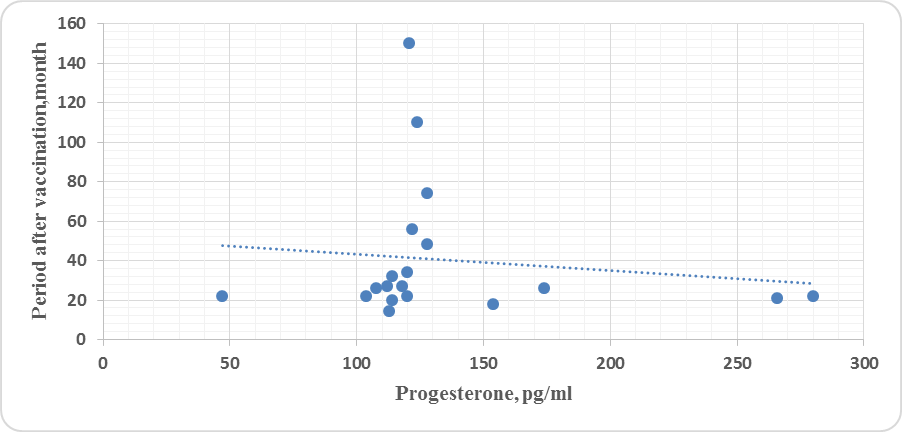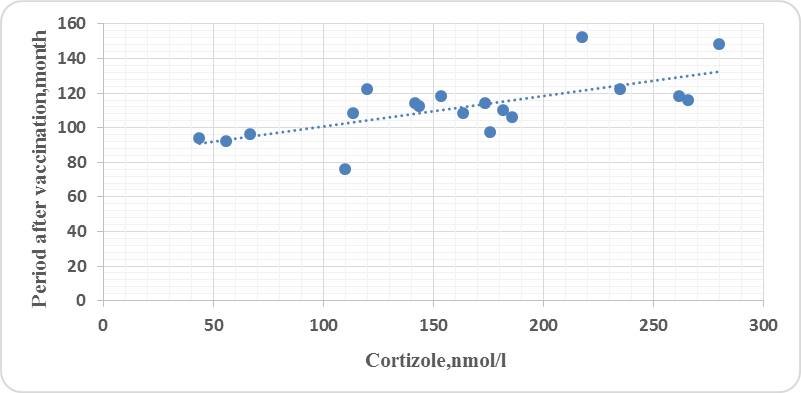-
Paper Information
- Next Paper
- Previous Paper
- Paper Submission
-
Journal Information
- About This Journal
- Editorial Board
- Current Issue
- Archive
- Author Guidelines
- Contact Us
American Journal of Medicine and Medical Sciences
p-ISSN: 2165-901X e-ISSN: 2165-9036
2022; 12(6): 682-685
doi:10.5923/j.ajmms.20221206.15
Received: May 20, 2022; Accepted: Jun. 6, 2022; Published: Jun. 23, 2022

Features State of the Fetoplacental System in Pregnant Women Vaccinated Against COVID-19
Diyorakhon M. Mamajonova1, Farkhad I. Shukurov2
1Assistant of the Department of Obstetrics and Gynecology №1, Tashkent Medical Academy, Tashkent, Uzbekistan
2Head of the Department of Obstetrics and Gynecology №1, Tashkent Medical Academy, Tashkent, Uzbekistan
Correspondence to: Farkhad I. Shukurov, Head of the Department of Obstetrics and Gynecology №1, Tashkent Medical Academy, Tashkent, Uzbekistan.
| Email: |  |
Copyright © 2022 The Author(s). Published by Scientific & Academic Publishing.
This work is licensed under the Creative Commons Attribution International License (CC BY).
http://creativecommons.org/licenses/by/4.0/

Purpose: to study the features of the hormonal status and markers of the fetoplacental system in pregnant women after vaccination against COVID-19. Materials and research methods. The study included 120 pregnant women vaccinated with the Gam-Kovid-Vak vaccine against COVID-19. Of these, 60 women were vaccinated in the second trimester of pregnancy (main group I) and 60 in the third trimester of pregnancy (main group II), and the comparison group consisted of 30 pregnant women who refused vaccination. The study used clinical, hormonal, ultrasound, Doppler and statistical research methods. Results. Analysis of the hormonal status and markers of the fetoplacental system in women vaccinated against COVID-19 did not reveal adverse changes in these indicators. All values established for all identified indicators were determined as corresponding to the gestational age, which did not lead to the occurrence of adverse events for them during pregnancy and in the fetus and infant. 2-3 months after vaccination, the level of the hormone estradiol in the blood increased 1.2 times compared to 1 month, and the hormone progesterone decreased 1.1 times. Conclusion: Vaccination of pregnant women against COVID-19 does not lead to significant fluctuations in the synthesis of placental hormones and markers of the fetoplacental complex in pregnant women vaccinated against coronavirus infection. 2-3 months after vaccination, the level of the hormone estradiol in the blood increased 1.2 times compared to 1 month, and the hormone progesterone decreased 1.1 times. The analysis of fetoplacental markers reveals changes in the duration of pregnancy after vaccination, and these changes do not adversely affect the fetus and labor activity.
Keywords: Coronavirus infection, Pregnancy, Vaccine, Hormones, Fetoplacental markers
Cite this paper: Diyorakhon M. Mamajonova, Farkhad I. Shukurov, Features State of the Fetoplacental System in Pregnant Women Vaccinated Against COVID-19, American Journal of Medicine and Medical Sciences, Vol. 12 No. 6, 2022, pp. 682-685. doi: 10.5923/j.ajmms.20221206.15.
1. Introduction
- In later times, the incidence of coronavirus infection among pregnant women has been increasing [1,2]. It is very important for pregnant women to take preventive measures to reduce the incidence and severe course of COVID-19 disease, as well as to prevent secondary complications during pregnancy [3,4]. An effective way to protect against coronavirus infection in pregnant women under pandemic conditions is to get vaccinated against this disease without saying it [5,6]. Only, vaccination is the only effective way to control the spread of COVID-19 among pregnant women [7,8]. Vaccination against COVID-19 can significantly reduce the incidence and mortality of pregnant women and their newborn infants [9,10]. It is well known that in many countries of the world, despite the fact that the vaccination of pregnant women against coronavirus is carried out on a large scale, studies aimed at studying the effect of vaccination against COVID-19 on the functioning of the fetoplacental system have been conducted with a very small number, therefore, it is necessary to conduct a wide range of research. The purpose of the study was to investigate the effect of COVID-19 injection on the functioning of the fetoplacental system in pregnant women.
2. Material and Methods
- The study included 120 pregnant women who were vaccinated against COVID-19, aged between 18 and 36 years of age. Of these, 60 were pregnant women who were vaccinated in the II trimester (I main group) and 60 were pregnant women who were vaccinated in the III trimester (II main group), while the comparison group was pregnant women who refused 30 vaccinations. All patients, conducted studies have matched the criteria for inclusion and no diseases associated with the inclusion criteria are clear. Criteria for inclusion: pregnant women aged 18-36 years of age, undergoing physiologic pregnancy, pregnant women in the II-III trimester for the duration of pregnancy and pregnant women who submitted a written consent letter to participation in the study were included. The criteria for non-inclusion in the study included oncological diseases, AIDS, hepatitis B and C infections in the Anamnesis, the last 3 months received immunoglobulin and blood preparations, the last 6 months immunomodulating drugs were used, cardiovascular and respiratory insufficiency, violations of liver and kidney function were detected, as well as fasting and metabolic disorders, acute infectious diseases, predisposition to allergic reactions. Vaccination was carried out in 1 phase with a difference of 2 months with the help of a Gam-Covid-Vak vaccine. The vaccine was injected into the deltoid muscle in a dose of 0.5 ml of one-third of the shoulder. Clinical, hormonal, ultrasound, Doppler and statistical research methods were used in the study. The amount of placental hormones was determined using the immunoferment method using standard reagents produced by firms “Boehringer Mannheim” (USA), “Beckman coulter” (USA), “DRG Diagnostics” (Germany) and Switzerland Hoffman La Roch using the MINDRAY MR-96A immunoanalyser. Ethical Aspects. The study procedure doesn't interfere with any ethical basics and oral agreement was taken to all patients.The obtained data was processed using the statistical package of software "Statistics 10.0".
3. Results and Discussion
- The analysis of the level of the amount of hormones of the fetoplacental system, conducted in groups after vaccination, showed that after vaccination, the level of estriol in the blood serum of pregnant women increased with appropriate clarity in relation to the duration of pregnancy in vaccinated women in Group I, and in the examination conducted after 2 and 3 months, it was found that.Ni Made Up (P<0,01). A similar situation in the quantity indicators of the hormone Estriol was observed in pregnant women vaccinated in the II Group, in which the amount of this hormone in the 3rd month increased by 1.2 times compared to the indicators in the 1st Month, respectively by 6.8±4.01 ng/ml, by 7.4±3.12 ng/ml and by 8.6±12.1 ng/ml.After vaccination of pregnant women, it was found that the level of the hormone of placental Lactogen increased by 1,1 times in vaccinated women in the I-group, with a corresponding increase in the duration of pregnancy, compared to the results obtained in studies 1-month after vaccination, and in groups, respectively, it was 6,8±2,01 mg/l, 7,4±10,01 mg/ A similar situation was observed in pregnant women who were vaccinated in Group II, both in women who were admitted to this group, the amount of the hormone of the placental Lactogen increased by 1.2 times compared to the indicator in the 3rd month, respectively, by 10,1±2,01 mg/l, 11,2±4,02 mg/l and 11,6±13,01 mg/l (p<0,01).Analysis of the amount of progesterone hormone after vaccination against coronavirus, found that in women entering the I-Group, the amount of this hormone increased by 1,1 times compared with the period of pregnancy, that is, the initial, 1-month after vaccination, and in groups, respectively, 140,2±3,12 nmol/l, 148,9±3,13 nmol/l and 160,14±2,13 nmol/ The analysis of this hormone in pregnant women vaccinated in Group II found that the amount of progesterone hormone in them decreased by 1.2 times compared to the results obtained after 1-month period, respectively, 168,02±2,16 nmol/l, 155,12±4,02 nmol/l and 142,08±3,15 nmol/l compared to the months(p<0,01) (Table 1).
|
|
4. Conclusions
- Vaccination of pregnant women against COVID-19 does not lead to negative changes in the synthesis and quantitative indicators of hormones of the fetoplacental system. After 2 and 3 months after vaccination, the content of the hormone estradiol in the blood increases by 1.2 times compared to 1 month after vaccination, and the hormone progesterone decreases by 1.1 times. The study of the correlation between the frequency of vaccinations, the duration of pregnancy and the content of hormones in the blood showed the presence of a direct correlation between the hormone estradiol and an inverse correlation with the hormone progesterone.Conflict of interests. The authors declare no conflict of interest.
 Abstract
Abstract Reference
Reference Full-Text PDF
Full-Text PDF Full-text HTML
Full-text HTML



